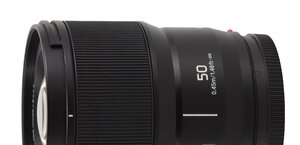Sigma C 150-600 mm f/5-6.3 DG OS HSM
8. Vignetting
| Canon 50D, 150 mm, f/5.0 | Canon 50D, 150 mm, f/5.6 |

|

|
| Canon 50D, 300 mm, f/5.6 | Canon 50D, 300 mm, f/8.0 |

|

|
| Canon 50D, 450 mm, f/6.3 | Canon 50D, 450 mm, f/8.0 |

|

|
| Canon 50D, 600 mm, f/6.3 | Canon 50D, 600 mm, f/8.0 |

|

|
It is clear that problems, if they occur at all, are very insignificant indeed. At 150 mm and the maximum relative aperture the vignetting amounts to 14% (−0.43 EV) and it decreases to 8% (−0.24 EV) on stopping down the aperture to f/5.6. At 300 mm the results are even better. Already at the maximum relative aperture the brightness loss is just 12% (−0.37 EV) and it decreases to 6% (−0.17 EV) when you change the aperture value to f/8.0.
Please Support UsIf you enjoy our reviews and articles, and you want us to continue our work please, support our website by donating through PayPal. The funds are going to be used for paying our editorial team, renting servers, and equipping our testing studio; only that way we will be able to continue providing you interesting content for free. |
- - - - - - - - - - - - - - - - - - - - - - - - - - - - - - - - - - - - - - - - - - - - - - - -
A bit worse results we got at 450 mm where, by f/6.3, you have to take into account the loss of 18% (−0.56 EV) of light in the frame corners and by f/8.0 you lose 9% (−0.26 EV). The biggest chances of noticing that aberration you get at the maximum focal length. Employing the maximum relative aperture the vignetting is on a level of 21% (−0.69 EV). On stopping down the lens to f/8.0 you can reduce that aberration to 12% (-0.36 EV) and it can be completely eliminated by f/11 (5%)
Now let’s check the performance of the lens on the bigger sensor of the Canon 5D Mark III. The appropriate thumbnails are presented below.
| Canon 5D MkIII, 150 mm, f/5.0 | Canon 5D MkIII, 150 mm, f/8.0 |

|

|
| Canon 5D MkIII, 300 mm, f/5.6 | Canon 5D MkIII, 300 mm, f/8.0 |

|

|
| Canon 5D MkIII, 450 mm, f/6.3 | Canon 5D MkIII, 450 mm, f/8.0 |

|

|
| Canon 5D MkIII, 600 mm, f/6.3 | Canon 5D MkIII, 600 mm, f/8.0 |

|

|
This time the vignetting is clearly noticeable and, what’s interesting, its value remains very similar at every focal length. By 150 mm and by f/5.0 the brightness loss in the frame corners amounts to 42% (−1.60 EV). That aberration decreases to 34% (−1.18 EV) on stopping down the aperture to f/8.0, and it becomes low only by f/11, where you get a value of 16% (−0.50 EV). You deal with an imperceptible level of 6% (−0.17 EV) by f/16.
At 300 mm and by f/5.6 the light fall-off in the frame corners amounts to 41% (-1.54 EV). When you change the aperture to f/8.0 the vignetting decreases to 25% (−0.84 EV), and after applying f/11 you can reduce it to a level of 19% (−0.61 EV). Even by f/16 you get slight chances of noticing that aberration as it is still 13% (−0.39 EV).
After passing to the 450 mm focal length the vignetting level decreases. At the maximum relative aperture that aberration reaches 40% (−1.50 EV), and by f/11 it gets to 17% (−0.54 EV). By f/16 the problem becomes almost imperceptible (10%).
The maximum focal length and the maximum relative aperture mean losses of light amounting to 39% (−1.44 EV), which decrease to 22% (-0.73 EV) after stopping down to f/8.0. The problem disappears completely by f/11 and f/16, where the vignetting is respectively 14% (−0.44 EV) and 7% (−0.20 EV).
When it comes to the vignetting the Sigma is worse than the rival Tamron. As it was described above, on full frame and with the lens wide open, the vignetting kept between 39% and 42%. In the case of the Tamron the level of that aberration was a bit lower, from 28% to 37%.
 |
 |
 |
 |






